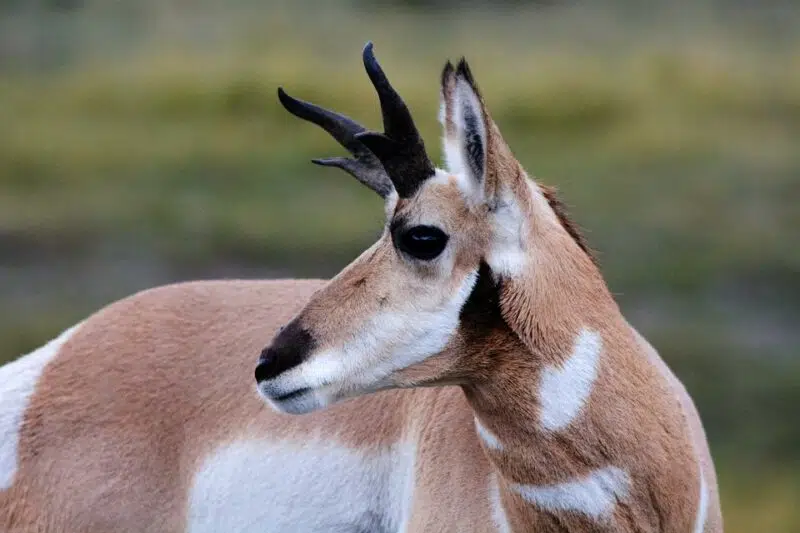Do you want to learn about animals and wildlife in Montana? Montana is located along the north side of Wyoming and under the south border of Canada. Montana has a small population of people living there but a wide variety of the most common native wildlife animals.
In Montana, one can find the very rarest in North America, the black-footed ferret. Montana state is also home to about 100 other species of other mammals. It has a good variety of tiny rodents to big predators. Montana State has a wide variety of about 440 species of birds, amphibian species, and several reptiles, as also many wild game animals.
Montana has some other rare species, like the Pygmy rabbit, Rubber boa, and North’s Scorpio. Due to its topography and proximity to Canada and the Pacific Ocean, it has a large diversity of animals.
Click below to jump to any section on animals in Montana:
Pronghorn
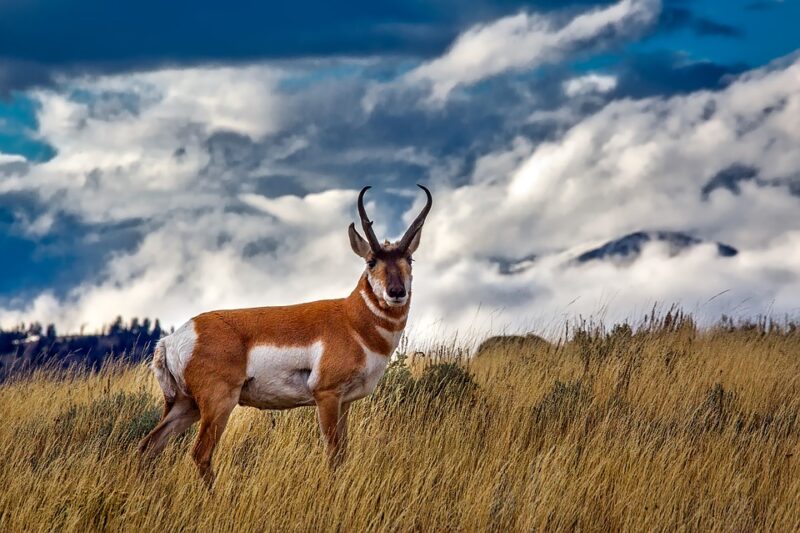
The pronghorn, known for its distinctive fanning horns which are shed annually, is a native of open fields and semi-deserts. It features a ruddy brown and white coat, with a short brown mane, white underparts, two white bands on the throat, and a prominent white patch on the rear end. This patch can be raised suddenly as a warning signal, visible up to 3-4 km (2-2.5 miles) away.
Despite its name, the pronghorn is not closely related to true antelopes. Adults stand about 80-100 cm at the shoulder, with males typically weighing around 40 kg and females slightly less. They are incredibly fast runners, capable of reaching speeds of 70 km/h and leaping 6 meters in a single bound. With eyes as large as those of elephants, pronghorns have excellent vision, detecting predators from up to 1 km away.
This adaptation is a legacy of intense predation during the Ice Age. Both sexes have horns, but males’ are longer and split into two prongs. After the mating season in October, males shed their horns, which regrow in winter and fully develop by spring for territorial challenges.
The mating season occurs in late summer and early autumn. Depending on the habitat, males may become territorial or form harems. The pronghorns rely on summer vegetation to regain energy spent during mating, leading to a lengthy gestation period of 250 days. Typically, females conceive twins, one in each uterine horn, while other embryos are lost to intrauterine competition.
In Montana, pronghorns are found in grasslands, deserts, basins, open plains, and fields, thriving in these open environments.
Mountain Goat
Mountain goats are agile and adept climbers, specially adapted to navigate the treacherous, snow-covered cliffs where predators fear to tread. In these high-altitude terrains, they can quickly turn the tables on pursuers, including humans. Belonging to the bovid family, mountain goats are closely related to sheep and true goats, despite their distinct appearance and behavior.
Their range extends from Yukon and Alaska down to Utah, with a significant population in British Columbia. Efforts have been made to reintroduce them to their former habitats and introduce them to new areas such as Kodiak Island, the Olympic Peninsula in Washington, Colorado’s Rocky Mountains, and South Dakota’s Black Hills. While past reclamation efforts in places like Vancouver Island were unsuccessful, mountain goat populations are sensitive to human impact and are closely monitored for conservation management.
Physically robust with strong legs and expansive hooves, mountain goats stand about 1 meter at the shoulder. Large males can exceed 120 kg, with females weighing between 60-90 kg. They have coarse, white, long hair over a thick, wooly undercoat and a beard around the slender muzzle. Both sexes have sharp, slightly backward-curving black horns, 5-25 cm in length. Unlike true goats, mountain goats avoid head-butting; instead, they use their horns for slashing. This cautious approach to combat is due to the potential for serious injury.
In Montana, mountain goats are typically found in mountainous habitats, thriving in these rugged, high-elevation environments.
Canada Lynx
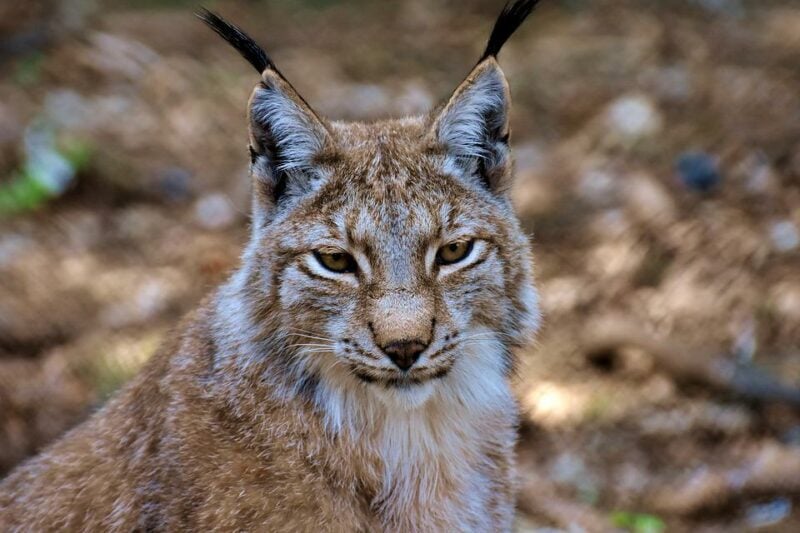
The Canada lynx is like the wildcat, yet its more drawn-out legs, more extensive feet, longer ear tufts, and more conspicuous dark-tipped tail can be recognized. The heaviness of a grown-up goes from 8.0 to 17.3 kg, and its length goes from 67 to 107 cm. On average, its tallness at the shoulder is 61 cm. The Canada lynx is likewise recorded as an inner worry by the IUCN, yet being a compromised animal category in the United States is considered.
Currently, the species is found in the boreal woods all through Canada (except Nova Scotia) and in the U.S. provinces of Washington, Idaho, Montana, Minnesota, New Hampshire, and Maine in environments incidental to that of the snowshoe bunny. The Canada lynx’s eating routine is expanded in the southern part of its reach: it goes after carcasses and potentially even young ungulates.
Canada lynx have been pursued and caught for their fur for many years, yet the degrees of northern populaces have remained genuinely stable over the long run. Sou hern populaces, particularly those in the commensurate United States, are compromised by living space misfortune and fracture from logging and farming transformation.
And numerous people are casualties of vehicle strikes or are caught in traps implied for different species. Ren wed introduction programs started in the mid-21st century, in which gatherings of creatures were delivered in other pieces of the Rocky Mountains, have met with moderate achievement.
Where can one find Canda lynx in Montana?
Lynx is found in boreal forests, which are cold with some moisture conditions.
Black Footed Ferret
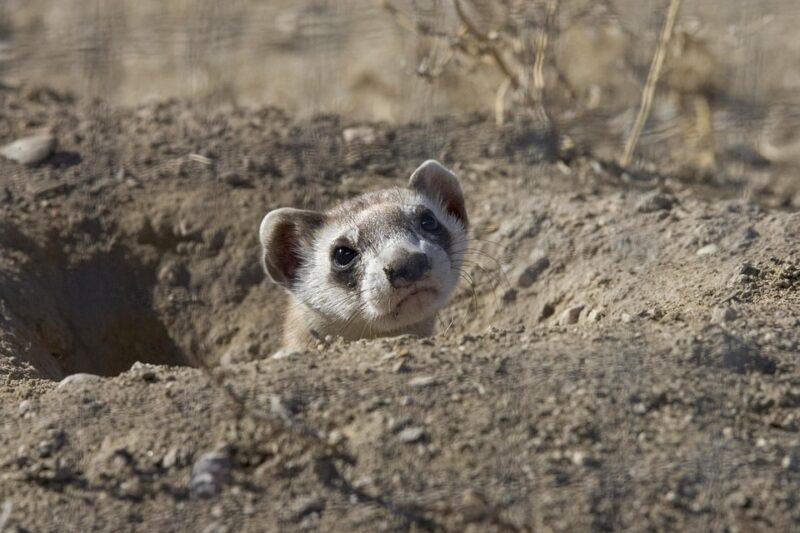
Dark-footed ferrets’ tone and markings mix well with meadow soils and plants, making them all around adjusted to their grassland climate. They are thin, wiry creatures with dark facemasks, dark feet, and dark-tipped tails.
The remainder of their body is short and smooth, with a yellow-buff tone fur, lighter on the tummy and almost white on the brow, gag, and throat. The r legs are short, with substantial front paws and hooks produced for digging. Dar-footed ferrets’ enormous ears and eyes recommend that they have intense hearing and sight; however, smell is likely their most powerful sense for hunting prey underground in obscurity.
Dark-footed ferrets once went through the North American Great Plains, and any place grassland canine settlements flourished, from southern Canada to northern Mexico. They have been introduced into parts of their previous reach in Wyoming, South Dakota, Montana, and Arizona.
Ferrets have a high metabolic rate and require vast amounts of food for their body size. Foo prerequisites fluctuate with the seasons and among individual ferrets; however, they, by and large, devour one grassland canine every three or four days.
In the wild, 90% of dark-footed ferrets’ eating routine is grassland canines. One ferret might eat north of 100 grassland canines yearly, and researchers compute that one ferret family needs more than 250 grassland canines. The rest of their eating routine incorporates mice, rodents, ground squirrels, hares, birds, and periodically reptiles and bugs.
Where can one find Black Footed Ferret in Montana?
The black-footed ferret is found in short grass prairies in Montana.
Whooping Crane
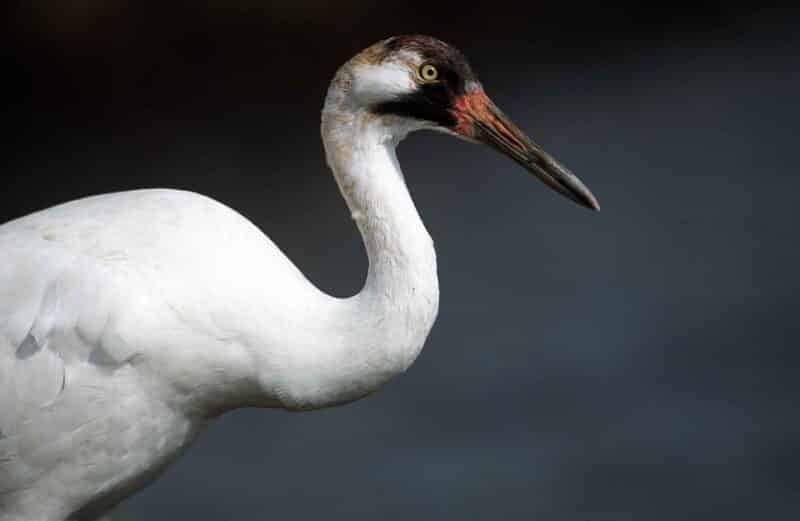
The most perceptible trait of the outshining crane is the enormous red fix on the head. The red hole reaches out from the cheek along the bill and over the highest point of the head. The red spot is made of skin and is practically featherless.
Besides the fix of red, it is primarily white to outshine cranes. The body and wing feathers are a radiant white, besides from the tips of the external wings. The ends of the essential quills are dark. Out shining cranes have yellow eyes and thin, dark legs.
With a stature of roughly five feet (1.5 meters), beating cranes are the tallest birds in North America. Bea ing cranes have a 7.5-foot (2.3-meter) wingspan. They are lean birds, and notwithstanding their stature, they weigh something like 15 pounds (6.8 kilograms).
Whooping cranes are omnivores. They eat scavengers, little fish, bugs, creatures of land and water, and reptiles. They’ll likewise eat grains, bog plants, and oak seeds. Bea ing cranes call with an uproarious, trumpeting cornet, and it’s more robust and more characterized than the call of the sandhill crane. In light, they additionally call with a profound shudder.
Where can one find a Whooping crane in Montana?
They can be found all around Montana, especially in grassland.
American Pika

Despite their cuddly appearance, American pikas-the littlest individuals from the lagomorph bunch, are among North America’s most complex creatures. Pik s are one of only a handful of exceptional warm-blooded animals in the lower 48 states that can endure their lives in the high landscapes, the desolate dead zone above timberline. American pikas are little, rat-like warm-blooded creatures. Pik s have short, bold bodies, huge, round ears, and no noticeable tail.
Pikas arrive at a size of around seven to eight inches (18 to 20 centimeters) long. The American pika has a brown and dark hue intended to disguise them among rocks, and Pik fur is thick to keep them warm in the colder time of year.
Throughout the mid-year, they put on a lot lighter layer of fur-nonetheless, the hair is still thick sufficient that a pika could overheat, assuming Ex Pikas are herbivores. They particularly love grasses, weeds, and tall wildflowers that fill in their rough, high-mountain environment. In old weather, fewer grasses and blossoms fill the mountains.
To prepare for the lean times, pikas like setting aside food throughout the mid-year. A p ka will gather wildflowers and grasses and spread them in the sun. The sun’s hotness dries the plants, so they don’t get rotten. The plants are put away in the pika’s cave until winter, posed to extremely high hotness for extensive periods.
Where can one find an American pika in Montana?
At the high elevation, they are found in rocky mountains and, at lower altitudes, in cool caves.
Striped Skunk
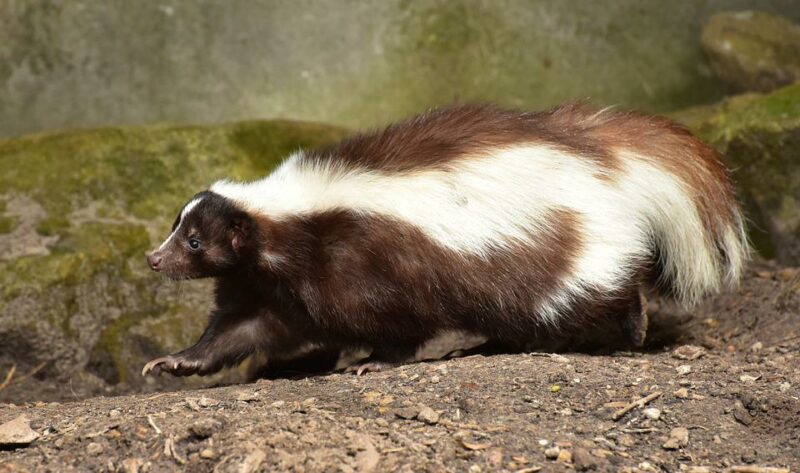
The skunk family is made of 11 species, 9 of which are found in the Western half of the sphere. Pri ci-pally nighttime, skunks are different carnivores that live in a large assortment of natural surroundings, including deserts, woods, and mountainous areas. Most of the skunks are found to be the size of a housecat, yet some are essentially more modest.
These animals in Montana also have a white bar in the middle of their eyes, also found in the uncommon hooded skunk of the United States. But the stripes are usually not found in the hooded skunk. The back side of the striped skunk has dark and black fur on the white area. The striped skunk has a size of about that of a tree squirrel and is the littlest skunk. Aside from the dwarf-spotted skunk., It can easily fit in an individual’s hand as the aftereffect of long hairs at the rear of the neck.
Where can one find a striped skunk in Montana?
They are found to be living in forests, grasslands, meadows, habitats, and suburban areas too in Montana.
Addax
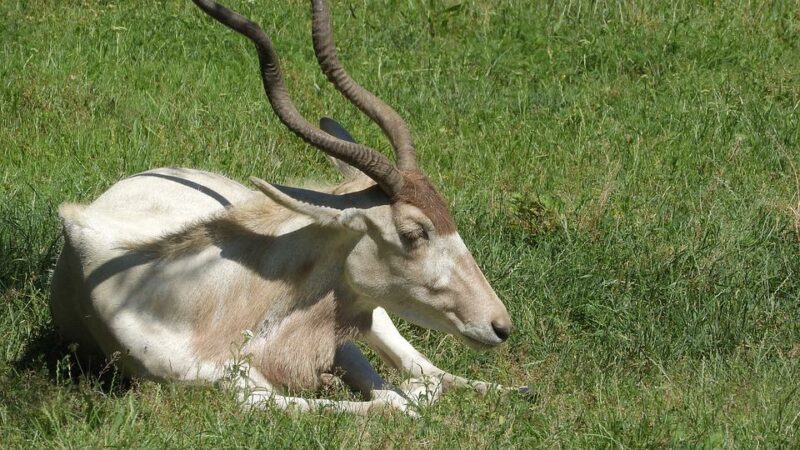
Male addaxes weigh 100-135 kg and have shoulder tallness of 95-115 cm. The r horns are 76-109 cm long. Fem les are close to as tall as guys, and just 10-20 percent lighter; their horns are more slender than the male’s yet similarly lengthy.
These animals in Montana have stocky form and substantial, relatively short legs giving the addax perseverance but not speed. It isis is effortlessly shabby on the rock fields and levels once essential for its stable environment.
The addax’s jacket is lightest-hued in summer and smoky dim in winter. The rump, tail, underparts, and legs are white, similar to a clear facial covering, and the mouth is different from a dark earthy colored temple tuft and dark gag.
The throat is covered with short, tarnished facial hair growth. Whi e different pronghorns of North Africa-gazelles and the connected scimitar-horned oryx-infiltrate the focal Sahara after precipitation has made the desert blossom; just the addax and the thin-horned, or Rhim, gazelle live there in all seasons.
Both are outfitted with broad hooves adjusted for voyaging productively on the sand, empowering them to possess the general gatherings of sand called ergs that act as asylums for poachers.
Where can one find Addax in Montana?
They live in arid regions, stony deserts, and sandy and semi-desserts.
Summary Animals in Montana
A large variety of animals are found in Montana. Mam als that make their home in Montana are bears, moose, lynx, mountain lions, elk, mule deer, white-tailed deer, coyotes, wolves, and wolverines. Mon also has otters, porcupines, mink, bats, badgers, beavers, and more.
If you enjoyed reading about the animals in Montana, check out Animals in Ohio and Saskatchewan next!
Join our Forum for free today!

- These are The 5 Largest Great White Sharks Ever Recorded - July 19, 2024
- The Surprising Benefits of Big Game Hunting - July 18, 2024
- $100k+ Hunting Experiences The Most Expensive Animals to Pursue - July 17, 2024

